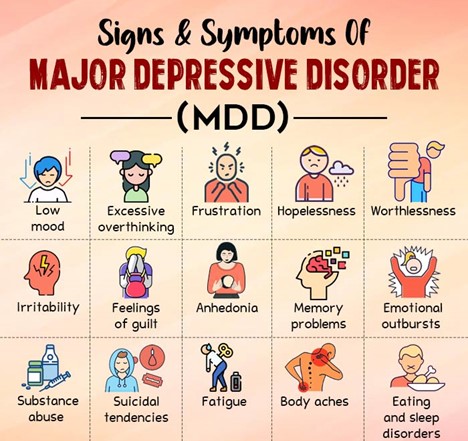A nurse is admitting an older adult client who has a suspected cognitive disorder. Which of the following inventories should be included as part of the admission assessment?
Brief Patient Health Questionnaire (Brief PHQ)
Abnormal Involuntary Movements Scale (AIMS)
Mental status examination (MSE)
Scale for Assessment of Negative Symptoms (SANS)
The Correct Answer is C
A. Brief Patient Health Questionnaire (Brief PHQ):
The Brief PHQ is a screening tool used to assess symptoms of depression. While it may be relevant to assess mood and emotional well-being, it is not specific to evaluating cognitive functioning or cognitive disorders.
B. Abnormal Involuntary Movements Scale (AIMS):
The AIMS is used to assess involuntary movements, particularly in individuals taking antipsychotic medications. It is not directly related to assessing cognitive disorders.
C,. Mental status examination (MSE)
Explanation:
When admitting an older adult client with a suspected cognitive disorder, including a mental status examination (MSE) as part of the assessment is crucial. The MSE is a structured assessment of a client's current cognitive functioning, emotional state, and thought processes. It helps to evaluate memory, attention, language, perception, orientation, mood, and other cognitive and emotional domains.
D. Scale for Assessment of Negative Symptoms (SANS):
The SANS is used to assess negative symptoms in individuals with schizophrenia. It focuses on features such as affective blunting, alogia, anhedonia, and other negative symptoms. While it may provide important information about a client's mental state, it is not primarily used to assess cognitive disorders.
Assessing cognitive function is a key component when evaluating older adult clients for cognitive disorders such as dementia or other cognitive impairments. The MSE provides valuable information to guide diagnosis and treatment planning for these conditions.
Nursing Test Bank
Naxlex Comprehensive Predictor Exams
Related Questions
Correct Answer is C
Explanation
Encouraging client feedback about their satisfaction with the facility experience is related to communication and patient-centered care, but it's not directly addressing the client's autonomy in making decisions about their own care or treatment.
B) Explaining unit rules and policies regarding unacceptable behaviors:
Explaining unit rules and policies is important for maintaining a safe and therapeutic environment, but it's more about providing information and setting expectations rather than addressing the client's autonomy.
C) Supporting the client's wish to refuse prescribed medications.
Explanation:
Autonomy is the ethical principle that emphasizes an individual's right to make decisions about their own care and treatment. In the context of healthcare, respecting autonomy means that healthcare professionals should honor a patient's decisions as long as they are informed and capable of making those decisions. By supporting the client's wish to refuse prescribed medications, the nurse is respecting the client's autonomy and allowing them to have control over their own treatment decisions.
D) Making sure the client understands expectations for client participation:
Ensuring that the client understands expectations for participation is important for collaboration in their care, but it's not directly related to the client's autonomous decision-making about their treatment.
Correct Answer is A
Explanation
A."You've been feeling that your life has no meaning."This response reflects active listening and acknowledges the client's emotions. Itreflects the client's feelings and encourages them to express more about their emotions and thoughts. It shows empathy and understanding, which can help build trust and rapport.
B. "You have a great deal to live for" may seem dismissive and does not address the client's current feelings of worthlessness.
C. "It's not unusual for depressed people to feel that way" can come across as minimizing the client's unique experience and does not provide support or encourage further discussion.
D. "Why do you feel you are worthless?" might make the client feel defensive or overwhelmed, and it does not offer the same level of empathy and support as reflecting their feelings would.

Whether you are a student looking to ace your exams or a practicing nurse seeking to enhance your expertise , our nursing education contents will empower you with the confidence and competence to make a difference in the lives of patients and become a respected leader in the healthcare field.
Visit Naxlex, invest in your future and unlock endless possibilities with our unparalleled nursing education contents today
Report Wrong Answer on the Current Question
Do you disagree with the answer? If yes, what is your expected answer? Explain.
Kindly be descriptive with the issue you are facing.
